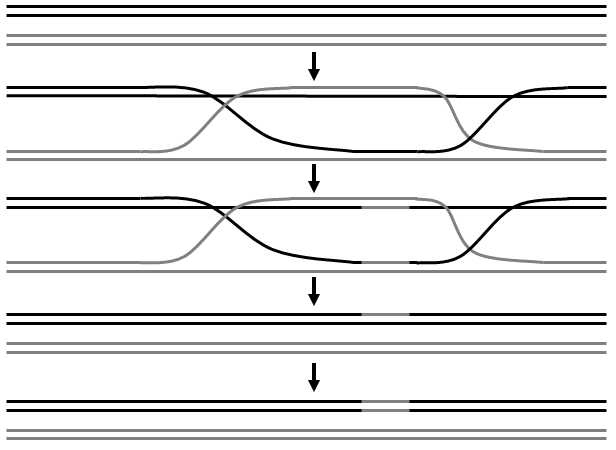VI.2.2 Molecular drive mechanisms include gene conversion, transposition, uneven crossing-over and nucleotide slipped-strand mispairing.
Molecular driveentails a number of mechanisms connected primarily with replication, recombination and repairing of nucleic acids. These mechanisms favour the formation and proliferation of certain sequential motifs in the gene pool of the population regardless of the degree to which the existence of these motifs is manifested in the phenotype of the organism and the degree to which it affects its biological fitness. The best-known processes active in the functioning of molecular drive include gene conversion, transposition, and also processes directly dependent on replication, i.e.uneven crossing-over andslipped-strand mispairing (Tachida 1993).

Fig. VI.4. Multiplication of genetic elements by gene conversion. Basically, every crossing-over is accompanied by gene conversion, as repair of nonpairing bases in the areas where crossing-over occurred is an essential step in this genetic mechanism. The genetic element can spread through gene conversion only if it is capable of acting preferentially as a template, according to which the enzyme apparatus repairs the second DNA chain in more than half of cases.
